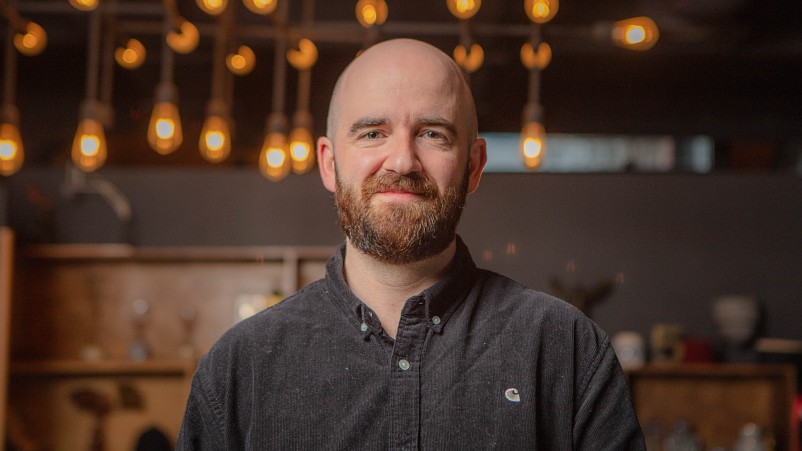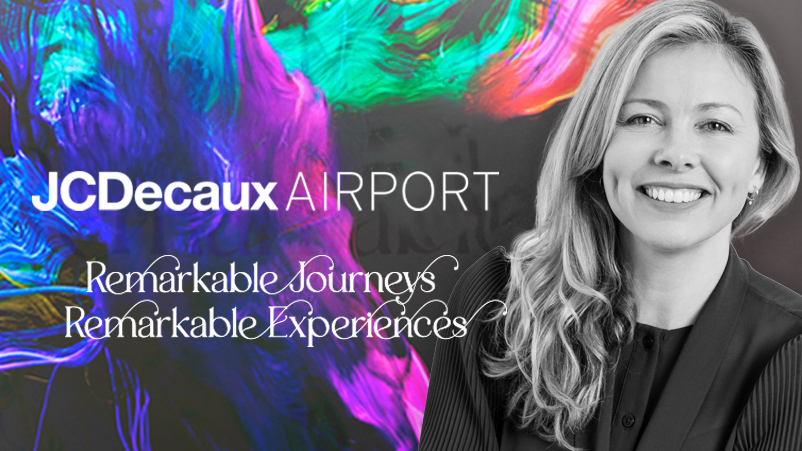Collapse, re-engineer, grow: Publicis practice lead triumvirate Hewitt, Bowman and Riley tasked with out-integrating rivals as brands shrink supply chains

Left to right: Publicis Groupe's chief data officer, Maurice Riley, chief creative officer, Dave Bowman, and chief media officer, Imogen Hewitt
Publicis Groupe was an early adopter of blowing up brands and collapsing silos into a reintegrated single P&L model. Now global growth is powering ahead of rivals – and other major holdcos are racing to similarly consolidate in a bid for end-to-end capability and de-duplicated overheads. Locally the firm has worked through the pain some of its transforming peers are now experiencing and practice chiefs – Dave Bowman (creative), Maurice Riley (data) and Imogen Hewitt (media) – are tasked with accelerating results. Their first full financial year as a triumvirate looks bumpy, given wider market sentiment, but they say economic pressure favours an integrated model as brands seek fewer partners and reduced overlap in a bid to do more with less – and means staff hone much broader capability amid a rapidly shifting environment.
What you need to know:
- Publicis Groupe in February cemented a new triumvirate-style leadership group with with Spark Foundry ANZ chief Imogen Hewitt taking a group role chief media officer, alongside chief creative officer Dave Bowman and chief digital officer Maurice Riley at the helm of the group's 'Connected Platform' model.
- Bowman reckons de-siloing agency services is a "vanguard for creativity", and was a significant draw in switching from Google a year ago. For Riley the model has normalised collaboration across agency borders to make "magic happen" – even if getting to the solution can be "unruly".
- The French holdco is at the vanguard of blowing up brands and reintegrating creative, media, plus tech, data and everything else – and analysts suggest others need to move similarly and faster.
- Now seven years in, the model has been a boon for developing cross-discipline talent, but it's taken a significant cultural transformation to bridge the gap between agency brands. "If people don't want to [work together], they won't," says Bowman. The challenge after that is to encourage talent to expand their horizons without "overloading" them, says Hewitt.
- Meanwhile, the practice leads are comfortable in Publicis Groupe's role in helping clients make "more responsible decisions" as marketing budgets continue to feel the squeeze – they say predicting and proving return on spend is just business as usual. Equipping clients with evidence to justify their investments, says Hewitt, redirects a conversation around spend retraction to one of driving growth.
Having different people tackling the same problem from different perspectives at the same time can be a little unruly, to be perfectly honest, but you almost always end up in a place which is better and different.
Publicis Groupe’s Australia and New Zealand business is closing in on its six month milestone under a new triumvirate-style leadership group that its hopes will help to fully realise the “Connected Platform” model it shifted to almost seven years ago.
The French holdco's capabilities have been grouped into three core functions – creative, media and data, helmed respectively by Dave Bowman, Imogen Hewitt and Maurice Riley. Charged with facilitating the effective collaboration and integration of Publicis’ talent and offerings, the three practice leads report directly to Publicis ANZ chief Michael Rebelo.
Stepping into her new group remit in January (and continuing at the helm of Spark Foundry ANZ), Hewitt’s appointment made the vision for the integrated leadership structure clearer for those playing along at home. It was the final piece of the puzzle that began a year ago when Bowman joined Publicis as chief creative – returning agency side after a near six-year stint lead creative for Google in APAC. A few months later Riley was made chief data officer after nine years at the group’s digital marketing shop, Digitas.
Between them, the trio represent the backbone of Publicis Group’s oft-touted ‘Power of One’ proposition, which under global direction has seen the repackaging of collective agency talent and capabilities under a single P&L.
That transition made for some tough times during 2019, which only became tougher during the pandemic era, with the group ending 2020 with organic growth down 6.3 per cent at the global level.
It’s taken a significant operational and cultural adjustment to get people “really working well together”, per Hewitt, but now the group is enjoying the upside, flipping its 2020 results for a 6.3 per cent uptick in organic growth through 2023 and powering ahead of rivals.
Remove siloes, make magic happen
Having hung up his cap as a founding partner of indie shop Special Australia to take on the Google opportunity back in 2017, Bowman said he was well attuned to the integrated play underway at Publicis. If he was going to return agency side, he was eager to be in an environment that done away with the typical silos.
“The industry was doing that on a much smaller scale in little shops 20 years ago to great effect... and then everything kind of got sort of displaced and fragmented,” Bowman tells Mi3.
From a distance, he viewed Publicis’ Power of One model as something of a “vanguard for creativity”, but he’s admittedly glad to have come to the party once the awkward phase was out of the way.
“I probably have the luck to have turned up late enough in the game that a lot of those cultural challenges that probably happened right at the beginning [between different] brands and different parts of the business had sort of ironed themselves out.”
Meanwhile, Riley has been through the thick of the transition since landing at Digitas in 2015. Hewitt too has seen her fair share of teething troubles, arriving at Spark Foundry right on the cusp of 2020.
All three now reap the benefits of what they describe as an open culture that Riley credits with normalising talent working across agency borders to “[solve] great client problems together”.
Bowman says it’s freed the agency of working within a “weird series of self-imposed boundaries”, as opposed to just doing “the best thing" for the client. “If there are fewer borders, there's more opportunity to just follow where [an idea is] going to lead you for the better, rather than going ‘we are a this shaped business, so we'd probably want to keep it in this shape’, you know?”
For Hewitt, it means less complexity and, naturally, better outcomes for clients.
“Having different people tackling the same problem from different perspectives at the same time can be a little unruly, to be perfectly honest, but you almost always end up in a place which is better and different,” she says.
Riley notes that it’s the “unruly” bit that’s where the real “magic happens”. “The innovation happens at the intersection of when creative and media come together,” he says.
With the borders now well and truly dow, Hewitt says it’s their job to “make that magic happen more often”.
If people don't want to [work together], they won't. There's no amount of systems that will overcome that.
Era of integration
Publicis is not alone in its pursuit integrated end-to-end capability. Accenture’s marketing services arm, Accenture Song, will be one step closer once its full-service media play comes to fruition, and Dentsu is racing to consolidate its own model with all the challenges that come, per it's latest restructure. That's painful, but, per Madison and Wall analyst Brian Wieser, "that doesn’t mean it’s the wrong strategy – and you could argue they are better off than the alternative”.
The alternative being: “Keeping a lot of different agency brands, hundreds of people with a CEO title and thousands of staff who work for those people – the cost structures are higher, the politics are more significant. The bureaucracy can make it harder to execute on changes, to evolve and adapt to the market. So there's definitely a lot of advantages to the serious consolidation we've seen with Publicis, Dentsu and Havas,” Wieser told Mi3 earlier this year. “We have not seen anywhere near as much as probably needs to happen at WPP and Interpublic."
Hewitt says the race for consolidated services is rooted in client demand for “models that can reduce the complexity in running multiple agencies when you're actually aligned on delivering the same business goals”.
Bringing together media, creative and data also speaks to how clients are increasingly required to look at their problems internally – particularly with the rise of commerce. Publicis has spent big over the last decade to get ahead of the curb on that front, starting with a US$3.7 billion investment in digital transformation firm Sapient in 2014. Epsilon, Profitero, and Citrus Ad have all since been brought into the fold, making for a fleshed-out capability that last month topped the Forrester Commerce Services rankings with the firm also setting aside €700m-€800m in 2024 for acquisitions specifically within commerce, alongside data, tech and AI.
Riley says Publicis’ success in this space comes down to “not only investing in the tools” but also “building the talent infrastructure that can operate those tools”, and “starting to have conversations” that centre on how creativity can “fuel commerce”.
He says the demand from clients to “connect their different services together”, i.e. end to end service capability from a single provider, is only growing. Which in turn forces staff to work cross-discipline, which in turn boosts T-shaped capability, per Hewitt. “They’re encouraged to go ‘that’s not my job, but I'm going to go over there, and can I just sit next to you and see what you're doing and learn?’”
Easy on paper...
Bowman says that while working to a single P&L has bridged the gap between agencies and disciplines, there’s also been a big cultural drive to unite talent from across Publicis’ brands. “If people don't want to do it, they won't. There's no amount of systems that will overcome that.”
Hewitt doubles down on that point. “You have to like one another and really want to [work collaboratively],” she says. “I have been trying to get cross-discipline teams to work together for the best part of 25 years. It's something I personally believe incredibly strongly in – the ability for different types of thinking to amplify one another – but it’s still not as prevalent as it could and should be.”
But in getting the collaboration piece right, Hewitt says they also have “sensible” about finding a balance. “You don't want to overload people, but you also want to give them the right sorts of opportunities to do the right sort of work.”
We're giving a client data that says if we do both [top and bottom of funnel] to this degree, in this balance, this is what your possible return is going to be.
Tightening purse strings
As much as marketers are feeling the squeeze of a tough macro-economic landscape, Publicis’ practice leads say its more or less business as usual when it comes to driving return on investment (ROI) for clients.
“In any environment where you're spending significant amounts of money on your client's behalf, you need to be able to demonstrate the results really quickly,” Hewitt says. “We have invested a lot of time and energy in building the ability to predict really, really well actually, what is going to happen as a consequence of the investment decisions that we're making.”
And that, per Hewitt, should be standard practice regardless of external economic pressures.
“It's a bit erroneous to only be thinking that we need to be able to prove the efficacy of the investments that we make in difficult circumstances, or where there's volatility. That's mandatory. You need to be able to do that every day, every day of the week, for every client that you have, as far as humanly possible. “
She also knocks back the notion that marketers must choose between “top of funnel” or “bottom of funnel” investment – “long-term brand metric improvement versus short-term sales improvement is not true”.
"The premise that you've got to choose one or the other is no longer right. You've actually got to get both right” adds Riley. “So now we're giving a client data that says, you know, if we do both to this degree, in this balance, this is what your possible return is going to be.”
Both he and Bowman assert that it’s about empowering the client to make “more responsible decisions” with their budgets – even if they’re not what they once were.
Per Hewitt, the most powerful thing an agency can do for a client is provide the “demonstrable”, “science-based” return on a campaign. That, she says, gives them “the ability to go to a CFO and a CEO and say, this is an investment, not a cost, and here's the evidence.”
“If you can do that consistently for your clients, then you're not having a conversation necessarily about spend retraction,” says Hewitt. “It's clear evidence-based marketing as a growth driver on the money that's being spent - and it's a completely different conversation.”
With the new leadership triumvirate now bedded in, their first full financial year at the helm should provide an opportunity to further prove the model.



